This week, the Irish Farmers' Association (IFA) chairs' forum went to Brussels and Paris.
The 39 county chairs, accompanied by national officers and executives, met European Commissioner Mairead McGuinness, MEPs and senior officials in Brussels.
I joined them for the second leg of their trip and it was a hectic couple of days.
We received a tour around Rungis Market at dawn on Thursday morning. It’s an absolutely extraordinary place. Six-hundred-and-fifty acres of a food campus.
It opens at two in the morning, and over the next six hours, 25,000 trucks rock in with food of every description.
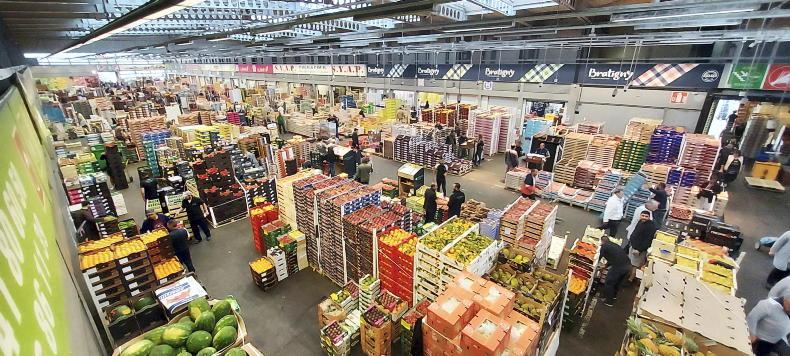
A view of half of the vast fruit and vegetable hall in Rungis Market.
That’s more trucks in Rungis daily than the total vehicles - trucks and cars - that go through the Dublin Port Tunnel daily. At Christmas, when throughput in Rungis peaks, that number doubles to 50,000 trucks.
There are a vast array of buildings, devoted to different types of food. Obviously, our group gravitated toward the main meat building.
Beef and lamb from all over France, and from all over Ireland. We always hear about the footprint of Irish beef, but it’s an entirely different matter to see it so graphically illustrated.
It would probably be easier to name the Irish meat processors not represented than those whose boxes of meat were clearly visible.
Premium
We saw lamb that had been slaughtered the previous day back home, hanging in a coldstore. There was a lot of interest in the range of types of meat attracting premium prices.
Nine-year-old cows, admittedly purebred beef cows, were attracting the highest of prices, as much as €17/kg.
Irish farmers, so used to being told that premium product means something quite narrow, were surprised and heartened by this, as by so many things.
They were thinking that perhaps we can build on our significant presence in Europe’s largest food market to expand the range of premium Irish meat products.
Later that day, at a reception at the Irish ambassador’s residence adjacent to the Champs Elysees, where we were made most welcome by ambassador Niall Burgess, a comprehensive presentation from Bord Bia’s Germain Milet showed the challenges and opportunities that exist.
One graphic showed the huge range of protected geographical indications (PGI) that French farmers have obtained. He spoke of how lamb is predominantly purchased and consumed by older people, a genuine concern.
Farms
The delegation went to two farms on Wednesday. It meant spending most of the day on a bus, but both farms were chosen for specific reasons.

Arnold Puesch d’Alissac works a family farm alongside his wife Elizabeth and in a 50-50 partnership with their son. It’s located in Pissy-Poville, near Rouen in central Normandy, and is a very ordinary farm in many ways.
About 50ha (120ac), half it rented, with cattle and crops. Flax is grown for linen, something we have largely abandoned on this island. I remember growing flax at home in Wexford, although it was mostly grown in the northern third of the country.
Poor weather at harvesting was the problem that scuppered the growing of the crop and the production of Irish linen - a tragedy.
The d’Allisec family also grow grain and sugar beet. The main revenue earner on the farm comes from the poultry business.
They produce organic chickens and slaughter them in their own processing plant every Tuesday. They also sell organic eggs and produce and slaughter hares on the farm.
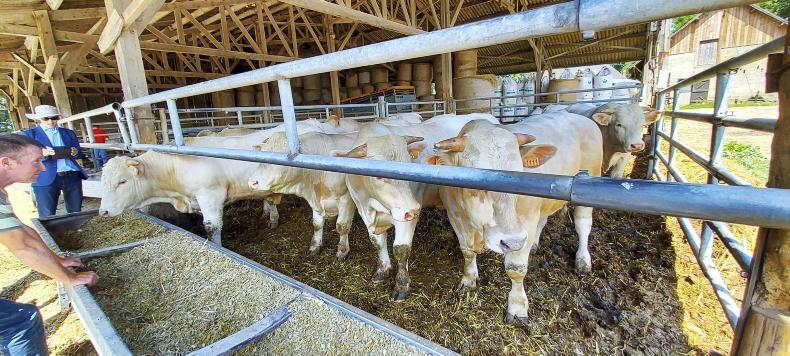
Arnold Puesch d’Alissac's Charolais cattle indoors in the heat of a French summer.
So what makes the farm so unique? Well, Arnold Puesch d’Allisac is the president of the World Farmer’s Organisation. It was great to meet him and a source of great encouragement to the IFA chairs.
For they are not just farmers from every county, they are also farmers from every sector, with a range of farm sizes. Some are third generation or more on their home farm, others bought their own farms, as did Arnold and Elizabeth d’Allisac, who bought the yard and 7ac in 1992.
To see the home of the president of the largest global organisation of farmers is so similar in scale and nature to the typical Irish farm is reassuring.
Significant differences
There were a couple of significant differences. Firstly, there was hardly a yard of concrete around the place. The drier weather allows the yard to be clay.
The chicken houses are in paddocks and are designed so they can be moved around between flocks. Wheels are attached and the shed is moved, slowly, to a new and clean location in the grass paddock.
Secondly, animals are housed to keep them out of the hot weather rather than in from the cold and wet. Trusses and pillars are as often timber as steel, something you don’t often see in our damp climate.
Dairying
The second farm we visited was also worth the journey. It was a dairy farm in Heubercourt-Haricourt, about halfway back to Paris from Rouen. This is again a partnership, between father and son Manuel and Benoit Gavelle.
It’s a flagship farm for a low-carbon farming initiative. Again, the farm’s scale is not untypical of an Irish dairy enterprise, with 120 cows being milked.
They are housed in a new purpose-designed shed. The parlour is a 13-unit-per-side herringbone. The size surprised the farmers, as much from a superstition point of view as the lack of scope for expansion.
The cost of the shed? An eye-watering €1.3m; over €10,000 per cow.
The farmers were extremely open about everything they are doing. Apart from the shed, they have planted some hedges to trap carbon. Fields are large and generally hedgeless, but large forests, mostly of deciduous trees, are visible in every direction across the rolling countryside.
All feed is shipped in, and none of it is fresh grass. A self-propelled diet feeder trundles up and down from the old yard, with a TMR mix of grass and maize silage, alfalfa, grain and proteins.
The aim is to make the farm more self-sufficient from imported proteins, some thing we will struggle to do in this country. We could and should be trying to become more self-sufficient from imported proteins, on a national if not farm level.
The heat meant the cows were all indoors in the mid-afternoon
I digress. The cows had no cubicles, with a large lie-back areas behind the scraper-served feeding area, which was as deep as a typical Irish slatted pen.
The lie-back area was bedded with linseed hulls, which last six months in summer and three in winter, meaning only three batches a year are needed.
The cows and their udders were remarkably clean. The dry weather helped with this.
Once again, the trusses and beams were all timber. Huge oak pillars held the large edifice up. The heat meant the cows were all indoors in the mid-afternoon, declining the opportunity to wander around the paddock available to them.
It looked like this was purely for exercise, as the grass was unappetising, with a couple of paddocks a couple of acres in size all the grass to be seen.
Sustainability
As the questions intensified, it became apparent that the farm couldn’t compete with a well-run Irish dairy farm with an eye on sustainability from a carbon footprint point of view.
The farm boasted 0.83kg carbon per litre of milk. One Irish farmer beside me leaned in and whispered “I’m 0.7kg myself at home”.
It was asked if the attractive Tegral-style slate roof would be augmented with solar panels. The reply was no, the decision had been taken to orientate the roof towards the west to maximise the cows' environment.
Irish farmers present strongly believed that the story being told on our own flagship Signpost farms is one that can stand comparison
I’ll be honest, this stunned the Irish farmers. It’s hard to believe the shed could not have been designed to slope towards the morning or midday sun while still giving the cows all the movement of fresh air and protection from winter wind and rain they could require.
All in all, the Irish farmers present strongly believed that the story being told on our own flagship Signpost farms is one that can stand comparison with the French.
While we are facing a huge challenge to meet whatever sectoral target farming faces for carbon reduction, our outdoor grass-fed dairy and beef herd is low carbon by European standards, and that is something to build on.
This week, the Irish Farmers' Association (IFA) chairs' forum went to Brussels and Paris.
The 39 county chairs, accompanied by national officers and executives, met European Commissioner Mairead McGuinness, MEPs and senior officials in Brussels.
I joined them for the second leg of their trip and it was a hectic couple of days.
We received a tour around Rungis Market at dawn on Thursday morning. It’s an absolutely extraordinary place. Six-hundred-and-fifty acres of a food campus.
It opens at two in the morning, and over the next six hours, 25,000 trucks rock in with food of every description.

A view of half of the vast fruit and vegetable hall in Rungis Market.
That’s more trucks in Rungis daily than the total vehicles - trucks and cars - that go through the Dublin Port Tunnel daily. At Christmas, when throughput in Rungis peaks, that number doubles to 50,000 trucks.
There are a vast array of buildings, devoted to different types of food. Obviously, our group gravitated toward the main meat building.
Beef and lamb from all over France, and from all over Ireland. We always hear about the footprint of Irish beef, but it’s an entirely different matter to see it so graphically illustrated.
It would probably be easier to name the Irish meat processors not represented than those whose boxes of meat were clearly visible.
Premium
We saw lamb that had been slaughtered the previous day back home, hanging in a coldstore. There was a lot of interest in the range of types of meat attracting premium prices.
Nine-year-old cows, admittedly purebred beef cows, were attracting the highest of prices, as much as €17/kg.
Irish farmers, so used to being told that premium product means something quite narrow, were surprised and heartened by this, as by so many things.
They were thinking that perhaps we can build on our significant presence in Europe’s largest food market to expand the range of premium Irish meat products.
Later that day, at a reception at the Irish ambassador’s residence adjacent to the Champs Elysees, where we were made most welcome by ambassador Niall Burgess, a comprehensive presentation from Bord Bia’s Germain Milet showed the challenges and opportunities that exist.
One graphic showed the huge range of protected geographical indications (PGI) that French farmers have obtained. He spoke of how lamb is predominantly purchased and consumed by older people, a genuine concern.
Farms
The delegation went to two farms on Wednesday. It meant spending most of the day on a bus, but both farms were chosen for specific reasons.

Arnold Puesch d’Alissac works a family farm alongside his wife Elizabeth and in a 50-50 partnership with their son. It’s located in Pissy-Poville, near Rouen in central Normandy, and is a very ordinary farm in many ways.
About 50ha (120ac), half it rented, with cattle and crops. Flax is grown for linen, something we have largely abandoned on this island. I remember growing flax at home in Wexford, although it was mostly grown in the northern third of the country.
Poor weather at harvesting was the problem that scuppered the growing of the crop and the production of Irish linen - a tragedy.
The d’Allisec family also grow grain and sugar beet. The main revenue earner on the farm comes from the poultry business.
They produce organic chickens and slaughter them in their own processing plant every Tuesday. They also sell organic eggs and produce and slaughter hares on the farm.

Arnold Puesch d’Alissac's Charolais cattle indoors in the heat of a French summer.
So what makes the farm so unique? Well, Arnold Puesch d’Allisac is the president of the World Farmer’s Organisation. It was great to meet him and a source of great encouragement to the IFA chairs.
For they are not just farmers from every county, they are also farmers from every sector, with a range of farm sizes. Some are third generation or more on their home farm, others bought their own farms, as did Arnold and Elizabeth d’Allisac, who bought the yard and 7ac in 1992.
To see the home of the president of the largest global organisation of farmers is so similar in scale and nature to the typical Irish farm is reassuring.
Significant differences
There were a couple of significant differences. Firstly, there was hardly a yard of concrete around the place. The drier weather allows the yard to be clay.
The chicken houses are in paddocks and are designed so they can be moved around between flocks. Wheels are attached and the shed is moved, slowly, to a new and clean location in the grass paddock.
Secondly, animals are housed to keep them out of the hot weather rather than in from the cold and wet. Trusses and pillars are as often timber as steel, something you don’t often see in our damp climate.
Dairying
The second farm we visited was also worth the journey. It was a dairy farm in Heubercourt-Haricourt, about halfway back to Paris from Rouen. This is again a partnership, between father and son Manuel and Benoit Gavelle.
It’s a flagship farm for a low-carbon farming initiative. Again, the farm’s scale is not untypical of an Irish dairy enterprise, with 120 cows being milked.
They are housed in a new purpose-designed shed. The parlour is a 13-unit-per-side herringbone. The size surprised the farmers, as much from a superstition point of view as the lack of scope for expansion.
The cost of the shed? An eye-watering €1.3m; over €10,000 per cow.
The farmers were extremely open about everything they are doing. Apart from the shed, they have planted some hedges to trap carbon. Fields are large and generally hedgeless, but large forests, mostly of deciduous trees, are visible in every direction across the rolling countryside.
All feed is shipped in, and none of it is fresh grass. A self-propelled diet feeder trundles up and down from the old yard, with a TMR mix of grass and maize silage, alfalfa, grain and proteins.
The aim is to make the farm more self-sufficient from imported proteins, some thing we will struggle to do in this country. We could and should be trying to become more self-sufficient from imported proteins, on a national if not farm level.
The heat meant the cows were all indoors in the mid-afternoon
I digress. The cows had no cubicles, with a large lie-back areas behind the scraper-served feeding area, which was as deep as a typical Irish slatted pen.
The lie-back area was bedded with linseed hulls, which last six months in summer and three in winter, meaning only three batches a year are needed.
The cows and their udders were remarkably clean. The dry weather helped with this.
Once again, the trusses and beams were all timber. Huge oak pillars held the large edifice up. The heat meant the cows were all indoors in the mid-afternoon, declining the opportunity to wander around the paddock available to them.
It looked like this was purely for exercise, as the grass was unappetising, with a couple of paddocks a couple of acres in size all the grass to be seen.
Sustainability
As the questions intensified, it became apparent that the farm couldn’t compete with a well-run Irish dairy farm with an eye on sustainability from a carbon footprint point of view.
The farm boasted 0.83kg carbon per litre of milk. One Irish farmer beside me leaned in and whispered “I’m 0.7kg myself at home”.
It was asked if the attractive Tegral-style slate roof would be augmented with solar panels. The reply was no, the decision had been taken to orientate the roof towards the west to maximise the cows' environment.
Irish farmers present strongly believed that the story being told on our own flagship Signpost farms is one that can stand comparison
I’ll be honest, this stunned the Irish farmers. It’s hard to believe the shed could not have been designed to slope towards the morning or midday sun while still giving the cows all the movement of fresh air and protection from winter wind and rain they could require.
All in all, the Irish farmers present strongly believed that the story being told on our own flagship Signpost farms is one that can stand comparison with the French.
While we are facing a huge challenge to meet whatever sectoral target farming faces for carbon reduction, our outdoor grass-fed dairy and beef herd is low carbon by European standards, and that is something to build on.







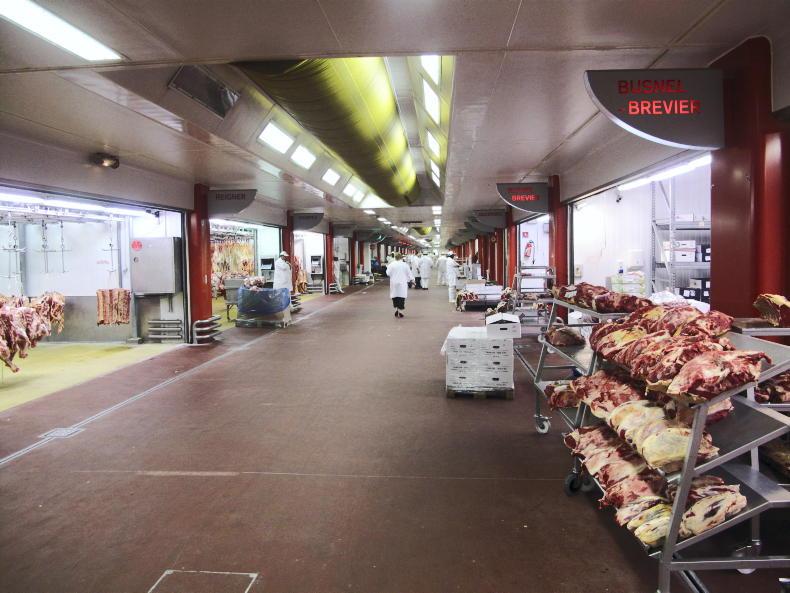
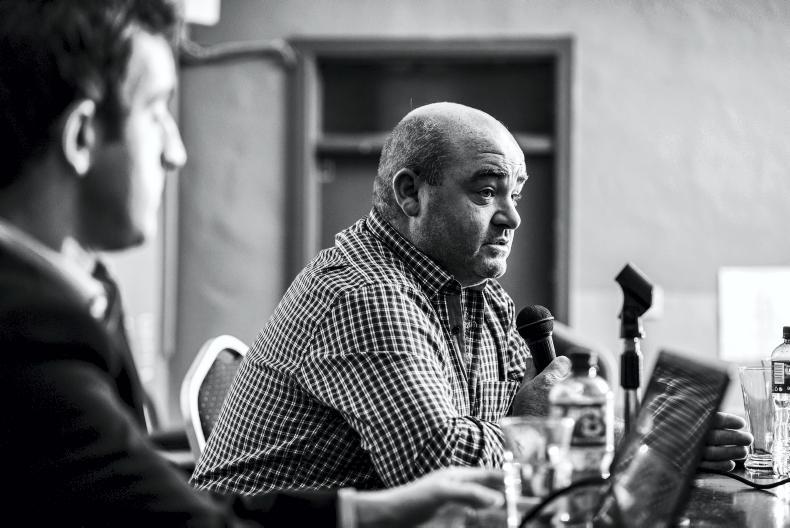
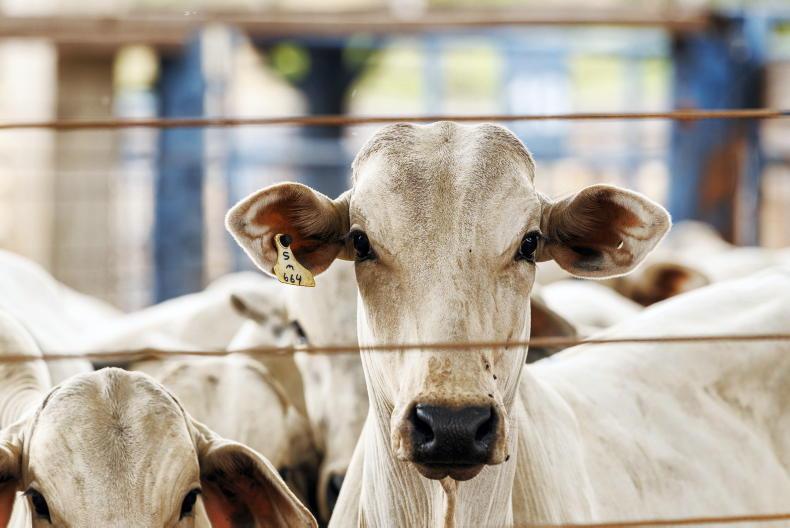
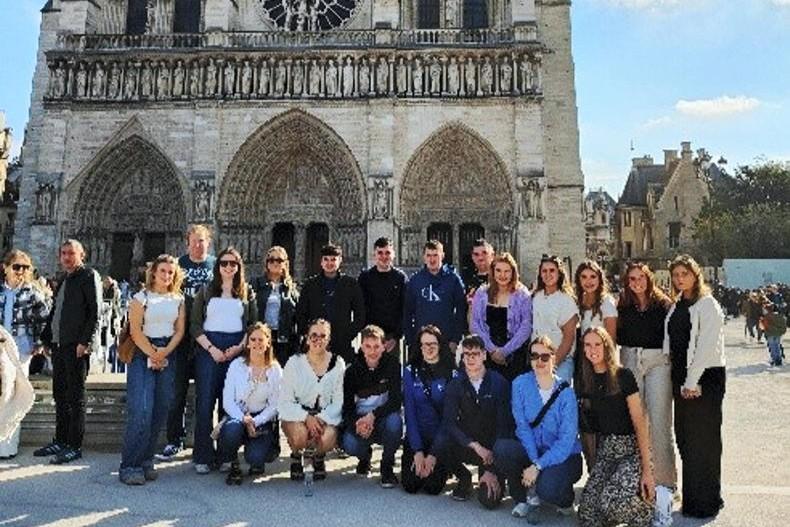
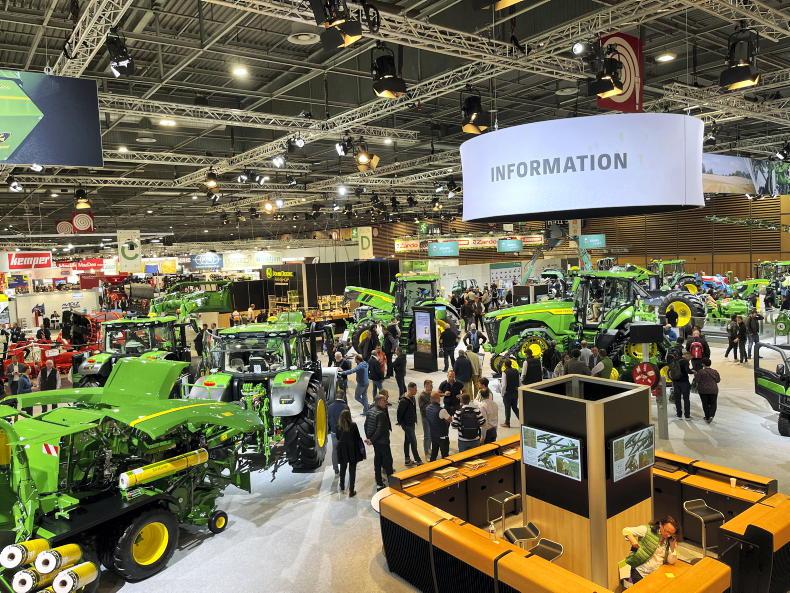
SHARING OPTIONS